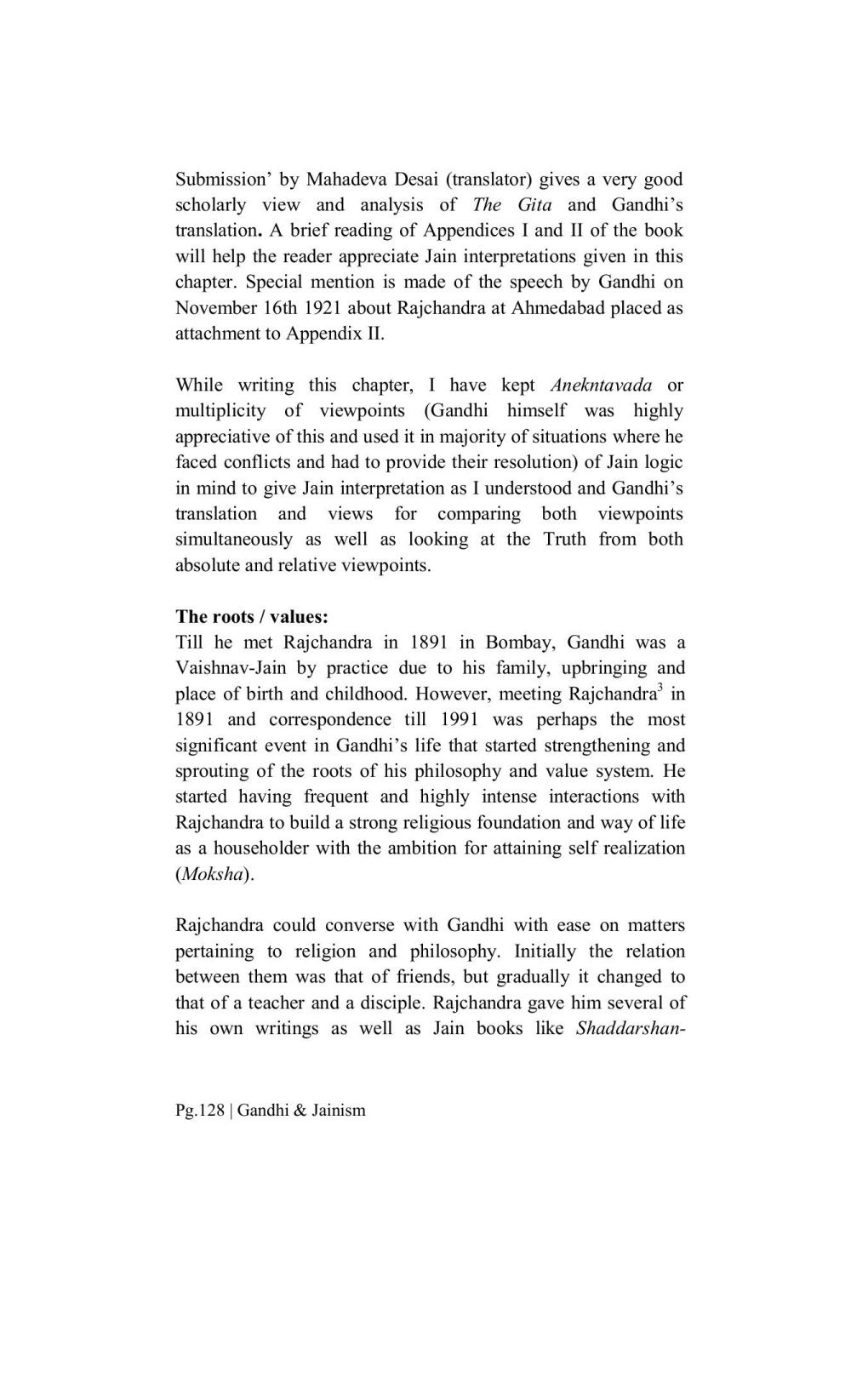________________
Submission' by Mahadeva Desai (translator) gives a very good scholarly view and analysis of The Gita and Gandhi's translation. A brief reading of Appendices I and II of the book will help the reader appreciate Jain interpretations given in this chapter. Special mention is made of the speech by Gandhi on November 16th 1921 about Rajchandra at Ahmedabad placed as attachment to Appendix II.
While writing this chapter, I have kept Anekntavada or multiplicity of viewpoints (Gandhi himself was highly appreciative of this and used it in majority of situations where he faced conflicts and had to provide their resolution) of Jain logic in mind to give Jain interpretation as I understood and Gandhi's translation and views for comparing both viewpoints simultaneously as well as looking at the Truth from both absolute and relative viewpoints.
The roots / values:
Till he met Rajchandra in 1891 in Bombay, Gandhi was a Vaishnav-Jain by practice due to his family, upbringing and place of birth and childhood. However, meeting Rajchandra3 in 1891 and correspondence till 1991 was perhaps the most significant event in Gandhi's life that started strengthening and sprouting of the roots of his philosophy and value system. He started having frequent and highly intense interactions with Rajchandra to build a strong religious foundation and way of life as a householder with the ambition for attaining self realization (Moksha).
Rajchandra could converse with Gandhi with ease on matters pertaining to religion and philosophy. Initially the relation between them was that of friends, but gradually it changed to that of a teacher and a disciple. Rajchandra gave him several of his own writings as well as Jain books like Shaddarshan
Pg.128 Gandhi & Jainism




